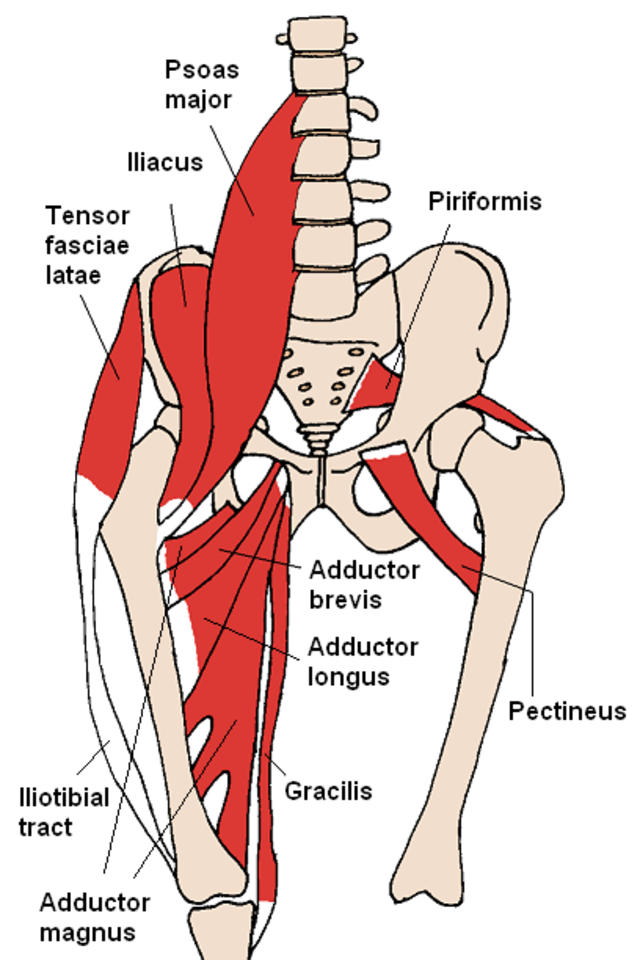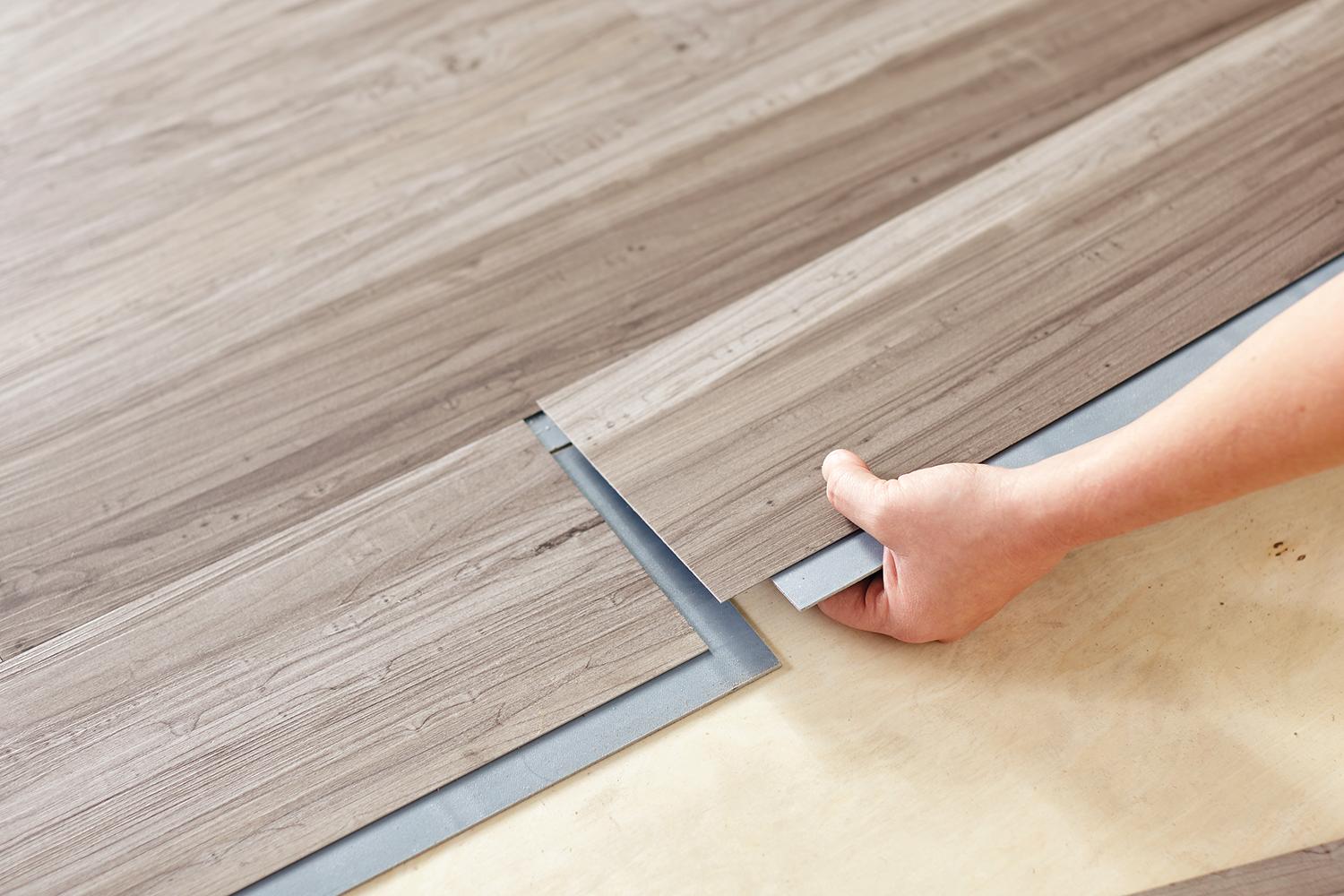Hip flexor tendonitis: diagnosis and treatment for dancers
/Hip flexor tendonitis (sometimes also spelled tendinitis) is an injury that is common among dancers, especially among dance styles such as ballet, Irish dance, tap, modern, break dance, jazz, and lyrical. Outside of dance, other athletes such as runners and cyclists may experience hip flexor tendonitis as well. Here, I give you some diagnostic tools that you can use to identify if you have a hip flexor injury, provide some suggestions for how you can treat the pain from tendonitis, and offer some exercises to minimize the likelihood you suffer one of these injuries.
Hip flexor tendonitis: what is it?
Anatomically speaking, the hip flexors are a series of muscles found within the pelvis, spine, and upper leg. They are made up of the psoas major, iliacus, rectus femoris, pectineus, and sartorius, but here we will collectively call these muscles the “hip flexors.”
When these muscles are mobilized, they are responsible for bringing the leg up towards the chest. For instance, kicking your leg upwards in a grand jete or split jump will utilize your hip flexors. You also use these muscles in everyday life when climbing stairs or while walking.
The hip flexors are attached to the bones by a variety of tendons. Tendons themselves are tough bundles of fibers that are sensitive to injury. Maybe through overuse or from landing or falling incorrectly, these tendons may get inflamed, which results in hip flexor tendonitis.
Often times, inflammation of these tendons may produce pain over the following hours or days. This pain may feel like a slowly building dull pain or a deep burning sensation. Sometimes, it can also feel like a sharper, stabbing pain. The pain may feel like it is located somewhere vaguely in the hip area, more often in the front. It may happen on just one side or both. Muscle spasms also accompany inflammation of the hip flexors.
Because of the severity of the tendonitis, it may start to limit your mobility when you dance.
You may also experience a sort of “clicking” feeling when trying to move your legs upwards. This clicking is usually not painful, but could be uncomfortable.
Treatment for hip flexor tendonitis
As with many tendonitis cases, a good strategy is the RICE therapy: Rest, Ice, Compression, and Elevation.
For most cases, inflammation of the tendons will subside with time and rest. This can be particularly challenging for dancers, especially if the injury arises near major performances, competitions, or recitals. The best case scenario in this circumstance is to rest and prepare mentally rather than physically. This can be done by mentally imagining you are using the muscles needed for every part of your dance routine.
It can also be helpful to put an icepack onto the hip when you feel particularly powerful pain. You won’t want to put the ice pack directly onto the skin, so try wrapping the ice pack in a thin towel before placing onto your hip. Don’t keep the ice pack on continuously, rather, put it on for 15 minutes at a time, then remove. Repeat later.
Alternatively, it may also help to put a heat pack against your hip. Heat packs are great for relaxing the muscles, which can ease some of the tension on the tendons. Electric heat packs can be plugged directly into an outlet, and usually have an automatic shut off feature. Like ice packs, these should not be placed directly on the skin, but rather in contact with a towel or other piece of cloth.
Over the counter pain medications may also be effective for tendonitis, such as an aspirin or tylenol. Follow the recommended dosages, and never exceed what is written on the labels.
In the medical setting, a physician or therapist would likely ask if you remember the moment when you began feeling the pain. Since hip flexor tendinitis is often a repetitive strain injury among dancers, you probably won’t be able to identify the moment of injury. The physician may also feel the area around your hip, upper leg, and lower abdomen to see if there is any tenderness or soreness. This is called palpation, and is not painful under normal circumstances.
In very severe cases, surgery may be suggested. However, this is very rare in overuse.
Generally, after resting over the course of 3 or 4 weeks, the pain will disappear. If pain continues for longer than 4 or 6 weeks, it may be best to seek medical intervention. Alternatively, if an acute injury that leads to the hip tendonitis also causes fevers or chills, these may be signs of infections or significant injury that can cause damage outside of the hip, and this necessitates medical intervention.
Prevention of hip tendonitis
Incorporating stretches following a dance session during cool down can be helpful for improving flexibility and preventing future injuries to these tendons. These exercises are designed to strengthen the muscles of the hip flexors as well as to improve the range of motion of the muscles in the area. Different dance styles are more sensitive to more specific injuries: for example, ballet, jazz, hip hop, and tap may cause injury to the extensors.
However, because many cases of inflammation are a result of microscopic level tears of the tendons, these stretches are not advised after a suspected injury. Rather, these stretches are meant to be performed when you are healthy and not experiencing any of the symptoms of hip flexor tendinitis.
Some of the following stretches would be useful:
Hip flexor stretch (standing lunge):
Put your right knee on the ground behind your hip with your left foot in front. Both of your toes should be facing forward. Transfer weight forward and hold for 30 seconds to a minute. Sink as low as you can, but do not allow your forward knee to go beyond the level of the toes. Then switch, so place your left knee behind you with your right foot forward, then lean forward.
Hip abduction:
Lie on your right side with your back against the wall. Lift your left leg slowly, then lower. Repeat before switching sides.
Core strengthening exercises:
Since lower core also contributes to the upper parts of hip flexion, exercises such as crunches and sit ups will help strengthen the muscles needed for hip flexion.
(Disclaimer: This is not meant to be medical advice. The information contained here is not a substitute for a professional medical consultation, diagnosis, or treatment. Seek the advice of your physician and therapist. Do not disregard medical advice in response to what has been seen on this website.)













